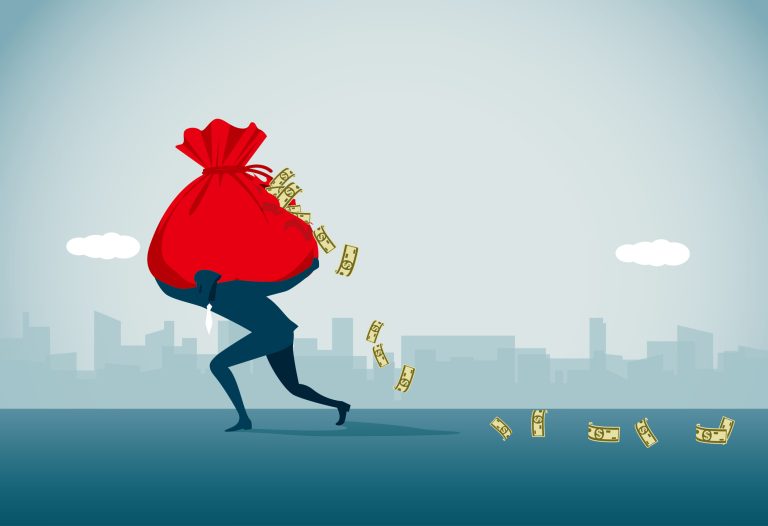COVID-19 relief aid fraud ran rampant in the United States during the pandemic. Billions of dollars of government relief aid that was meant to stabilize the U.S. economy was instead pilfered. Social security numbers of federal prisoners and people who had previously passed away were used to redeem unemployment checks, while federal loan applicants were not thoroughly vetted. All of this, along with other blatant scams, may have led to the biggest case of fraud in many years.1
According to the Associated Press, more than $280 billion was stolen from the government’s COVID relief fund, while another $123 billion was misspent or wasted. The total loss exceeding $400 billion amounted to 10 percent of the total $4.2 trillion the government doled out in COVID relief aid, which was the “the largest rescue package in American history.”2
The COVID funds in question were authorized by the Coronavirus Aid, Relief and Economic Security Act (CARES ACT) in 2020 and the Consolidated Appropriations Act in 2021.3 The CARES Act was enacted in an attempt to lessen the devastating economic impact of U.S. government policies, which were implemented in response to the COVID pandemic, had on families and businesses.4
Independent investigators and analysts surmise that the government, in an effort to rapidly spend the trillions of dollars authorized in COVID relief funds, failed to exert proper control during the start of the pandemic and acted too leniently with loan applicants.5
Dan Fructer, chief of the fraud and white-collar crime unit at the U.S. Attorney’s office in the Eastern District of Washington said:
Here was this sort of endless pot of money that anyone could access. Folks kind of fooled themselves into thinking that it was a socially acceptable thing to do, even though it wasn’t legal.6
COVID Relief Assistance Programs Lacked Proper Safeguards
The Small Business Administration Association (SBAA) provided $1 trillion in an effort to aid small businesses during the COVID pandemic.7 The agency was in charge of two major COVID relief assistance programs—the COVID-19 Economic Injury Disaster Loan Program and the Paycheck Protection Program.
Proper safeguards to prevent fraud were not implemented as the agency gave out an unprecedented amount of money quickly. Loan applicants could “self-certify” that their applications were true. As a result, experts estimate that the COVID-19 Economic Injury Disaster Loan Program cost tax payers $86 billion in fraud so far with updated numbers to be released soon.
The Paycheck Protection Program is estimated to have squandered $20 billion in fraud. The Paycheck Protection Program allowed banks and other financial institutions to issue government backed loans, many of which were millions of dollars, to businesses who would not be required to pay them back if they used the money for business expenses. Some of these companies were fraudulently created just for the loan, while other criminals stole existing business names already registered with the state, and some legitimate companies inflated the number of employees in order to secure more money.8
According to the Pandemic Response Accountability Committee, a government watchdog on COVID funds, almost 70,000 social security numbers that did not match names or birthdates on applications for the Paycheck Protection Program went unnoticed.9
Government Given More Time to Catch the Criminals
Currently, the SBAA has more than 80,000 criminal actions in COVID related fraud which would take 100 years to follow-up on. Fortunately, In August 2022, legislation was signed to extend the statute of limitations from five to 10 years for prosecution of fraud related to these two programs.10
The amount of money the SBAA admits has been stolen may just be the tip of the iceberg. The amount of fraud reported by the SBAA is challenged by a University of Texas study published in 2022 that discovered $117 billion in likely fraudulent loans by the Paycheck Protection Program.11
According to Labor Department Inspector General Larry Turner, there has been at least $76 billion in unemployment assistance scams together with the $115 billion that was inadvertently provided to the wrong people. The five-year statute of limitations has not yet been extended for unemployment fraud.
A March 2023 press release by the U.S. Internal Revenue Service (IRS) shows that the agency has investigated 975 tax and money laundering cases totaling $3.2 billion in COVID relief fund fraud. 458 of these cases have led to indictments and 236 people have been sentenced to federal prison for an average of 37 months.12
If you would like to receive an e-mail notice of the most recent articles published in The Vaccine Reaction each week, click here.
Click here to view References:
No comments:
Post a Comment